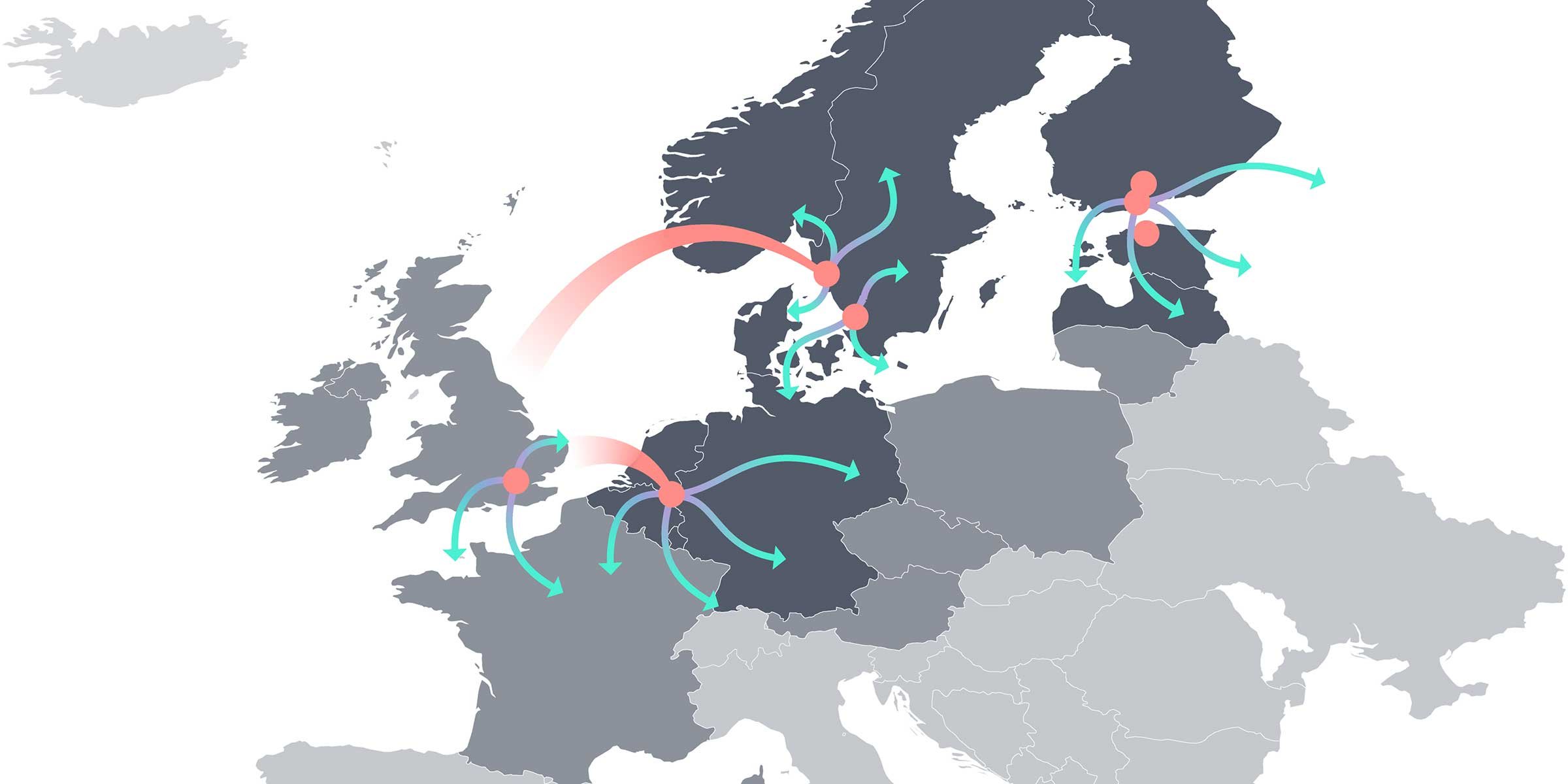As an e-commerce business owner, you probably remember the first days of trading: the orders started to trickle in, and the feeling of excitement packing and labelling those first customer packages felt like it’d never get old.
Until, of course, it does! When you’re first starting out, it’s pretty simple to run your e-commerce store as a sole trader, using do-it-yourself business tools, templates, builders and software.
But when does your personal capacity start to hinder your business’ capacity for growth?
It’s not to say that handling your business from start to finish isn’t great! It totally is, and it’s a great way to learn about your processes and your customers — up until a certain point. You’ve got 100% control over the order management process: you can inspect incoming products, quality control to your own standards, and customize orders ‘til your heart’s content (why not pack with pink paper on Monday, and purple on Tuesday?)
You’ll know when you’ve reached the point of outsourcing help, or upgrading your systems. Simply ask yourself:
- Am I struggling to process the number of orders I’m receiving?
- Can I manage orders from multiple channels efficiently?
- Do I have the space to step back and look for growth opportunities?
- Am I making errors in the order management process?
If you’re nodding your head, it’s time to think about letting go of some (just a little!) of that control, trusting an experienced partner or system, and move from being a one-person-show to a business with real potential for growth.
Plus, your time is better spent doing the things that nobody else can do: working on your products and your brand.
Okay, enough convincing – let’s talk about choosing an order management system, and what common pitfalls you need to look out for.
What does an Order Management System do, exactly?
An Order Management System is exactly what it sounds like: a central hub that manages and tracks sales, orders, inventory, and fulfillment. It's used to manage the process for products to find their way to the customers who bought them.
It might seem like just another system to some, but nothing can hurt online retail more than incorrect picking and packing, wrong orders, or late shipments. The right system helps online retail businesses operate smoothly, efficiently, and automate repetitive manual processes.
So how do you choose the right one, and know which ones to steer clear of?

5 pitfalls to avoid in an Order Management System
1. Choosing a system that’s a headache to use
It should go without saying, but your order management system should be user-friendly and intuitive. Think about it: it's no use getting a system to help save time and reduce manual tasks if the time is then spent on learning how to use it.
So many (usually larger, more well-established) order management systems on the market feel like you’re using Office ‘95. And nobody wants to relive that.
But you might be thinking “Well, if I won’t be using it manually every day, does it really need to be so simple? Absolutely! You need a system that’s not only simple for you to jump on and get a clear picture of where your orders are at — but also something that’ll save you time in the long run.
2. Choosing a system that’s unable to track orders from start to end
Too often do we see companies coming to us at OGOship with order management systems that are a mish-mash of older, legacy systems without the capacity to track orders from multiple sources from end to end.
But it doesn’t have to be that way! Imagine having your orders from your website, Facebook, Instagram, Amazon, eBay, Etsy and more fulfilled, shipped and tracked — all visible in one place. That’s what you should be looking for in your e-commerce order management system.
3. A partner that doesn’t provide support for multiple markets
It’s rare to find an e-commerce merchant that doesn’t ship internationally. However, some order management systems are still country or region-specific — particularly those in larger markets like Europe and the USA.
So when you’re choosing how you want to manage your order flow, and which partner or system to work with, consider:
- Can this system support international shipping methods?
- If I choose to expand to new markets, do I have to add or change systems?
- Can I use multiple warehouses to save on shipping time and environmental costs?
4. A system that doesn’t have reliable and customizable automation
One of the key benefits of using an order management system is automation — once you’re all set up, you can often automate all (or almost all) of the order management process. The thing is, though, if you can’t trust that your system’s automation is reliable, is it really worth it?
You need to find the solution for your business that has the optimal balance between control and scalability, to be able to track everything to the detail, but not if you don’t want to.
Look out for features like:
- Automated shipping and tracking codes to customers
- Automated stock level notifications
- Automated order issue notifications
5. A system that doesn’t give insight of your growth potential
Being able to track, fulfil and manage is awesome — but the real value of an order management system is in the insights you can pick up being able to see your entire business at a bird’s eye view.
For example:
- If you begin to ship increasing amounts to a particular location, can you see these trends on your order management system’s dashboard?
- Can you pick up and remedy bottlenecks in your shipping and fulfillment processes?
Overall, the features should be focused helping you increase your store’s profitability — through shipments, sales, and optimizing inventory so you can get the goods off the shelves and to your customers as quickly and cost-effectively as possible.
MyOGO by OGOship
You might have picked it up by now, but we’re pretty serious about Order Management Systems. And of course, we’re pretty big fans of our own Order Management System, myOGO, which is the system all our 3PL customers use to manage the orders.
It’s truly one simple, integrated system that has been designed to fulfill the needs of a growing e-commerce business.
Here are just a couple of things our customers love about myOGO:
- myOGO is incredibly lightweight, user-friendly and intuitive
- It’s specially developed for e-commerce needs
- 30+ native integrations for Shopify, WooCommerce, Magento, PrestaShop, OpenCart, MyCashflow, Vilkas, Fortknox and Quickbutik and more
- Third-party integrations for eBay, Amazon, Etsy, CDON, Prospectcart and more
- If you need custom integrations, we can easily manage that
- Real-time view of stock inventory and shipment statuses
- Full backlog and perspective on action history
- Transparent and efficient return handling
- Multi-warehousing with OGOships global warehouse network
If you want to know more about myOGO and its features, you can always request a free demo.


Comments